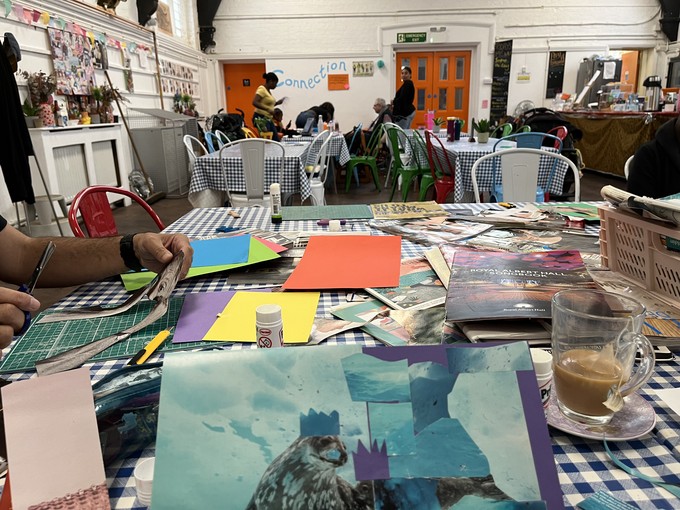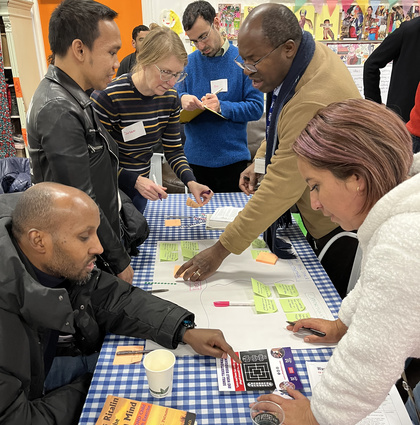
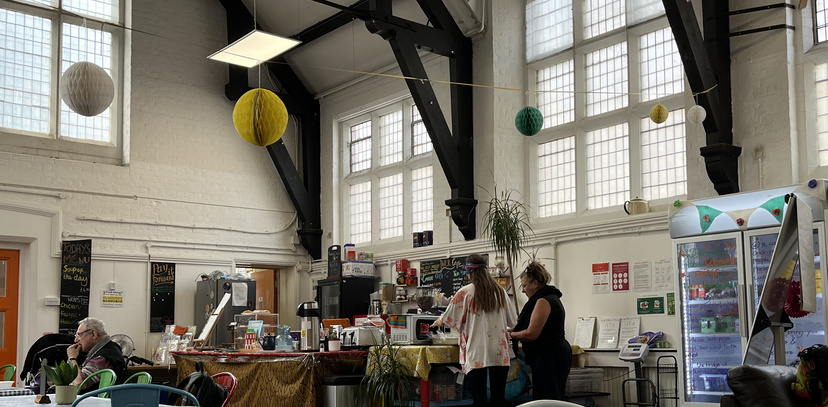
Olimpia Mosteanu writes about an important social space in Walworth, reflecting on what we learned from the research we carried out at Walworth Living Room in the summer of 2023 and autumn of 2022.
“It feels like you can come in by yourself and be comfortable, there are few places like this in London. The spirit in the spaces is generous, a warm spirit, it helps that other people are comfortable in the space and the activities help too.” Walworth Living Room visitor
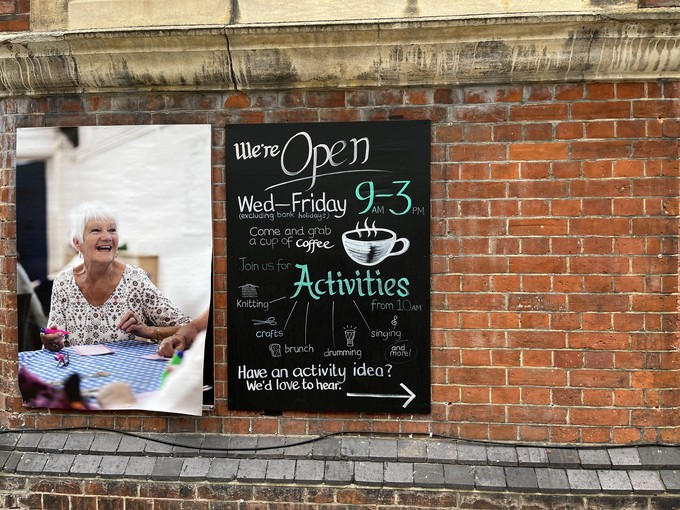
Walworth Living Room is a space for local communities to come together in Walworth. It opened in 2019 and is a project of Pembroke House. It hosts a Community Cafe, a Community Fridge, and offers classes and other social activities.
Social Life researchers carried out a short ethnographic project at Walworth Living Room as part of the wider evaluation we did for the We Walworth project. One of the rooms at Walworth Living Room housed the indoor activities of the We Walworth Working Groups, Neighbourhood Welcomes were run from the space and the main hall was used for a ward forum where ideas from the first Working Group were shared and discussed.
The conversations we had with Walworth Living Room’s visitors captured a wide range of voices and experiences of the space. People’s stories showed how the Living Room supports an ecosystem of relationships and resources through programming as well as spontaneous, unstructured activities. Some visitors were regular users who came to Walworth Living Room multiple times during the week for no activity in particular. Others were ‘activity- driven’ regulars; they got involved because of an interest in a particular activity such as the collaging club or activities for their children. Yet others were occasional visitors or first timers, who came to know the space because of a specific event that they attended at the Living Room.
“It's a space for everybody.” Walworth Living Room visitor
Spaces that support communities are not mere local amenities, and Walworth Living Room shows why this is needed. We learned that what makes the Living Room a key social infrastructure space in Walworth is the approach to combining intentional programming with unstructured activities. Together these activities support local people and their networks. We noticed this when we looked at how the We Walworth project activities created unexpected opportunities within the Living Room.
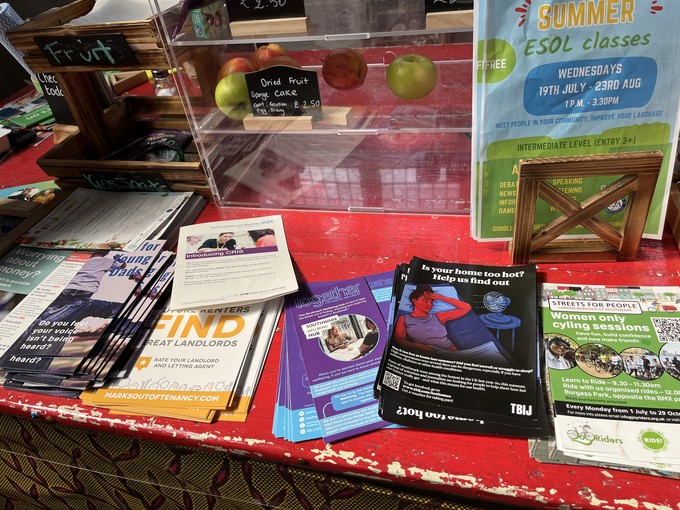
As the We Walworth project went on, activities continued to be advertised at Walworth Living Room and sometimes the staff brought them up in conversations with visitors. In time, some of the regular visitors felt more motivated to learn about the local issues addressed by the We Walworth project.
“[At the We Walworth neighbourhood welcome event] I met new people, friendly faces, people were easy to talk to. The topics were interesting: people's concerns, after COVID things were getting worse, things like this make you think the council are not just sitting in the office, shows that they care about the locals, that they do their job.” Walworth Living Room visitor
Participation in We Walworth events allowed people to meet other regular visitors, to feel part of the larger community, and it made them more aware of what was happening in the local area. For some of those we spoke to, this translated into a wider sense of ownership over the local community. This happened organically, through people chatting about activities on offer or through the connections people made. WhatsApp and newsletters played a role in facilitating cross-over between We Walworth and Walworth Living Room activities.
People shared different stories about their journeys with Walworth Living Room. No journey was alike and most of the stories we heard showed that Walworth Living Room has multiple meanings, as individuals' experience of the space is multifaceted. For its regular visitors, Walworth Living Room was about a mix of experiences that allowed people to feel and share a sense of belonging, friendship, support, and food.
“It feels like a living room, it's not a cliche, I can just come, people know me, I know them. I’m learning the moms’ names; we’re picking up tips from each other.” Walworth Living Room visitor
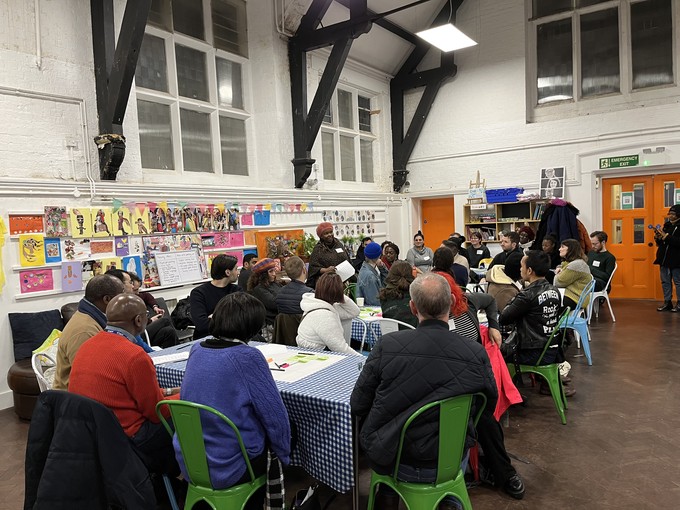
By facilitating relationships and encouraging participation, social spaces strengthen the local ecosystem of resources. For Walworth Living Room, food was an important part of what the space meant to visitors. This happens in part because of the Community Fridge, but also because of the other ways in which food is incorporated into a range of activities. Again, formal programming and spontaneous activities were both key to the experience of the space. The Community Café and the Hot Meals after-school free lunch programme offered to children and parents on Fridays shape how the space is experienced by many of the Living Room’s users.
Another key characteristic of effective social infrastructure is being flexible and making sure that different needs are met. The Living Room allowed visitors to make the space their own at their own pace. After a while, it became easy to identify a group of regulars who seemed comfortable to take part in whatever was going on at the Living Room, showing familiarity with the regular flow of activities and the events that have started more recently. But other visitors were still getting used to the space, and they were at ease doing so. A few people mentioned that the staff know how to make people feel comfortable and do not rush them to interact or take part in activities.
“From home to home, it's friendly, it's lovely. It has good activities. If you're at home and feel down you can come here, have a cuppa, have something to eat, chat with everybody, I know most people...” Walworth Living Room visitor
A key theme that cuts across visitors’ journeys and their experiences of Walworth Living Room is its welcoming atmosphere, which is important in making social spaces work well. The space brings people together around a range of activities and it makes visitors feel at home, among familiar and new faces. Visitors praised the ‘generosity’ of the space and the lack of hierarchy between staff and visitors. Regular users moved through the space of the Living Room with the ease and confidence that people have at home, proving that the name of the space - the Living Room - suits its activities and adequately captures visitors’ experiences there.
